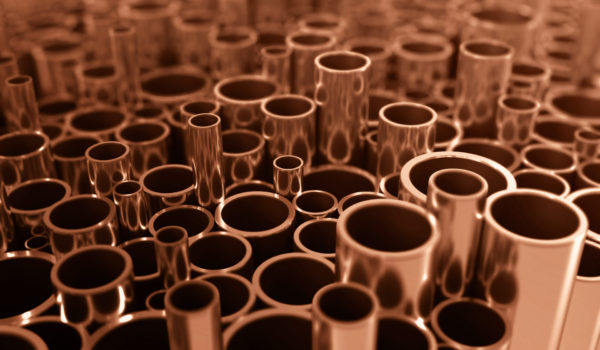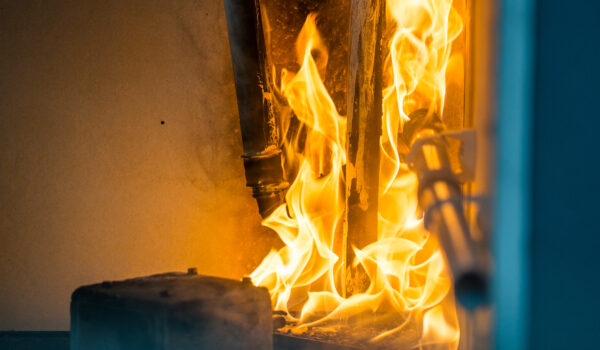March 22 marks World Water Day, an event organised by the United Nations to highlight the importance of clean water and advocate for the management of freshwater resources.
Millions of people around the world lack access to clean water. One of the main reasons for this is poor quality distribution systems that leak and allow contaminants to enter the water supply.
Though it is rarely discussed as such, prioritising safe and sustainable plumbing materials in water distribution systems is one of the most effective strategies for improving global water security.
Profiling the global water crisis
The water crisis is worsening. In the wake of climate change and a growing global population, more people around the world are struggling to find clean water.
The latest UNICEF data estimates that 844 million people worldwide lack access to drinking water, and a further 2.3 billion have no access to basic sanitation facilities.
Under current consumption rates, the WWF predicts that two thirds of the world’s population will experience water shortages by 2025.
There is a confluence of challenges facing global water security, one of the key ones being a lack of quality infrastructure to safely transport water from the source to homes and other buildings.
Globally, more than 45 million cubic metres per day are lost through leakage. Faulty or damaged water pipes also carry a risk of contamination, as harmful waste materials can leach into cracks and enter the water supply.
The importance of safe piping materials
It probably comes as no surprise that the material of a plumbing system can have a significant impact on the safety of the water it carries. However, only in recent decades has this become a real and tangible concern for plumbing professionals.
Lead water pipes, which had been used for centuries, were finally banned in the UK in 1970. Health professionals had become increasingly concerned about the risk of lead dissolving into drinking water and causing serious harm to people’s health.
The ban gave rise to a national replacement scheme, which has seen lead water pipes replaced with safer alternatives in copper and plastic. Though lead pipes remain in some antiquated buildings, the ban has helped to drastically reduce lead poisoning in the UK.
Water contamination in general remains a big problem in the UK and beyond. Improving the performance of water distribution systems, namely through the application of high-quality antimicrobial piping materials, will be key to increasing the global supply of clean water.
The benefits of copper water pipes
One of the biggest debates in the plumbing industry today is copper vs plastic pipes. When considering safety credentials, as well as performance and sustainability, it’s clear that copper pipes come out on top.
Copper water pipes are naturally antimicrobial
A number of studies have now established copper’s natural resistance to bacteria and fungi. Controlled laboratory tests show that certain diseases like Poliovirus, E-coli O157 and Legionella pneumophilia are killed shortly after coming into contact with copper.
This is an important property in medical copper pipes, where antimicrobial copper is used to ensure that medical-grade gases being delivered to patients remain sterile. The same principle applies to the transfer of water to our taps and showers.
In contrast, plastics pipes have no natural antimicrobial resistance and therefore present the opportunity for bacteria to grow and leach into drinking water. One study found that PEX pipes are ten times less effective than copper pipes at controlling Legionella pneumophilia.
Other researchers focusing on wildfires have discovered that exposing plastic water pipes to heat causes dangerous chemicals to leach into the supply. Testing eleven thermally damaged drinking water pipes, one study found that ten out of eleven plastic pipes leached benzene, a known carcinogen, into water.
Given that the number and threat of contaminants is growing, with fertilisers, pesticides and microplastics all on the rise, antimicrobial copper is a unique position to safeguard the global water supply for decades to come.
Copper water pipes are corrosion resistant
One of the main ways that bacteria enter the water supply is through cracks and leaks in plumbing pipes. By working with reliable building materials that can be trusted to retain their structural integrity, the threat of water contamination can be reduced considerably.
Robust and naturally corrosion resistant, copper water pipes are perfectly suited for use in underground environments where corrosive elements abound. The red metal has a naturally protective film that forms on its surface and acts as a barrier to corrosion.
Compared with other plumbing materials, copper has a corrosion resistance that’s superior to steel. Copper water pipes are also likely to last longer than plastic pipes, reducing the need for repairs and the potential of disruptions to the water supply.
Copper water pipes are infinitely recyclable
In an increasingly populous world in which resources are stretched, it’s important to prioritise sustainable materials that can meet the needs of the present without compromising the future. As an infinitely recyclable material, copper is the perfect piping material in terms of sustainability.
Once copper pipes and copper wires reach the end of their lifecycle, they can be recovered and sent to specialist facilities for recycling in a process known as urban mining. What’s more, the copper can be recycled repeatedly without any loss of quality of performance.
Plastic pipes, often marketed as sustainable, are recycled only very rarely. According to National Geographic, 91% of all plastics produced in the world have not been recycled. Where plastic is recycled, it can only be used two or three times before losing its structural integrity.
Learn more about the impressive properties of copper below.
Copper pipes: safely supplying water around the world
Antimicrobial, highly durable and naturally resistant to corrosion, copper water pipes are perfectly equipped to support the rising demand for water. By picking copper pipes over plastics, water distribution systems around the world can be future proofed for generations to come.
If you’d like to learn more about the properties of copper as well as the red metal’s many uses, make sure to check out our other news items or subscribe to our newsletter.

